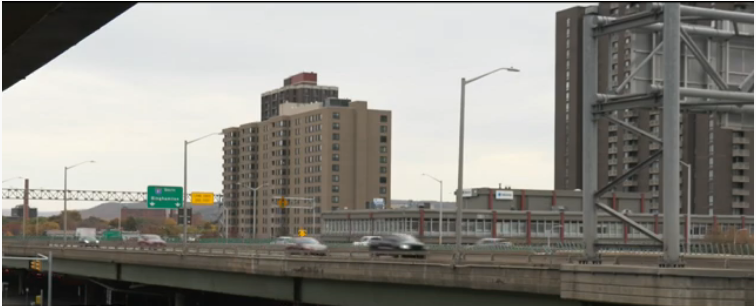
I-81. The infamous highway splits Syracuse into an east-west divide that separates the city culturally as much as it does geographically. For years, there has been a growing divide between communities on either side of the ominous overpass, but Syracuse officials are finally ready to address the problem. In 2019, the New York State Department of Transportation announced that they were tearing down the portion of I-81 that hangs over Almond Street in favor of a community grid that would open up the city. For Syracuse Mayor Ben Walsh, this stretches beyond the scope of a simple construction project.
“While that in and of itself is a transformational opportunity, in order to make it truly move the needle and truly begin to undo some of the harm that was done with this project, our goal can’t simply be to protect our most disadvantaged and marginalized communities,” Walsh said. “Our goal must be to lift up those very same communities that were, that were harmed so severely when the original highway was built.”
It’s that rebuilding of the community that has become the central focus of this transportation renovation. White House Senior Advisor Mitch Landrieu says Syracuse must build for the future that they want.
“Design produces outcomes,” Landrieu said. “If you design something for people to be separate, they will be separate. If you design something for people to come together, they’ll come together.”
For many, this project has the potential to be a beacon of light in the Syracuse area, one that attracts workers of all levels as they attempt to pull off the ambitious infrastructure overhaul. Alan Marzullo, the business manager for Syracuse’s local chapter of the International Brotherhood of Electrical Workers, said he views the transformation of I-81 as an opportunity to provide jobs to residents of the city.
“Most importantly and relevant is to know that we are putting our neighbors, people of color, veterans, displaced workers into a skillset and knowledge base to allow them to access well-paid, good union jobs,” Marzullo said.
According to New York Senator Kirsten Gillibrand, funding for the project exceeds $2 billion. She’s excited to see the positive impact that the removal of the eyesore can have on the city.
“I look forward to finding ways to use these provisions to revitalize our communities while repairing some of the damage done to underserved populations when infrastructure like I-81 was first originally signed to be built,” Gillibrand said.
Gillibrand also mentioned that this is currently the most heavily-funded transportation project in the United States, a good sign that Syracuse will be getting the resources it needs to make the changes officials desperately want to see.




